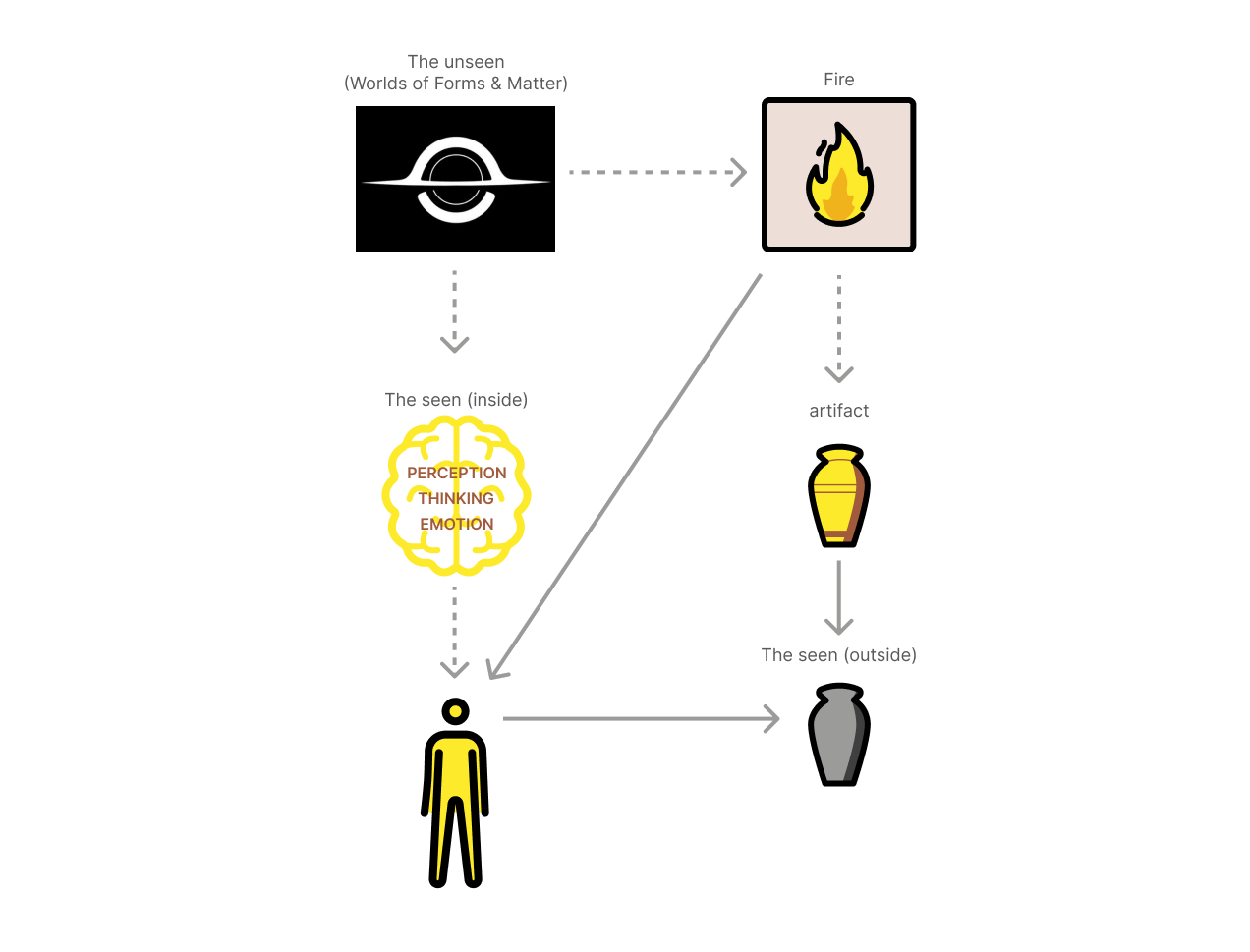Plato believed that what we perceive through our senses is just a shadow of true reality. In his famous Allegory of the Cave[1], he argued that we live in a world of illusions, and only through reason can we access the “Forms”—eternal truths that lie beyond what we see. Similarly, in Buddhism, the “Three Wise Monkeys”[2] teach mindfulness and ethical conduct, encouraging us to be mindful instead of what we see 🙈 , hear 🙉, and say 🙊.
Like a prism, this site refracts the ordinary into a spectrum of availability stuff, revealing what has been hidden in plain sight. We see the invisible stuff through the prism of science to understand how our brain works and makes decisions; we’ll focus on psychology, cognitive load theory[3], our faith, the social impact on us, and so on.

Flames 🔥
This site aims to share stuff as fire, a metaphor for sharing knowledge that can ignite new perspectives and understanding. We try to present theoretical, abstract, and complex content simply and concisely that is easy to understand and absorb in the hope that it can challenge and change your beliefs and perceptions.

Notes
- [1] Allegory of the Cave. From top to bottom: The Sun, Natural things, Reflections of natural things, Fire, Artificial objects, Shadows of artificial objects, allegory (image, illusion, analogy of the Sun, and of the divided line). Wiki.
- [2] Three Wise Monkeys: “does not see”, “does not hear”, “does not speak”. Wiki.
- [3] Cognitive load theory provides a general framework and has broad implications for instructional design, by allowing instructional designers to control the conditions of learning within an environment or, more generally, within most instructional materials. Wiki.